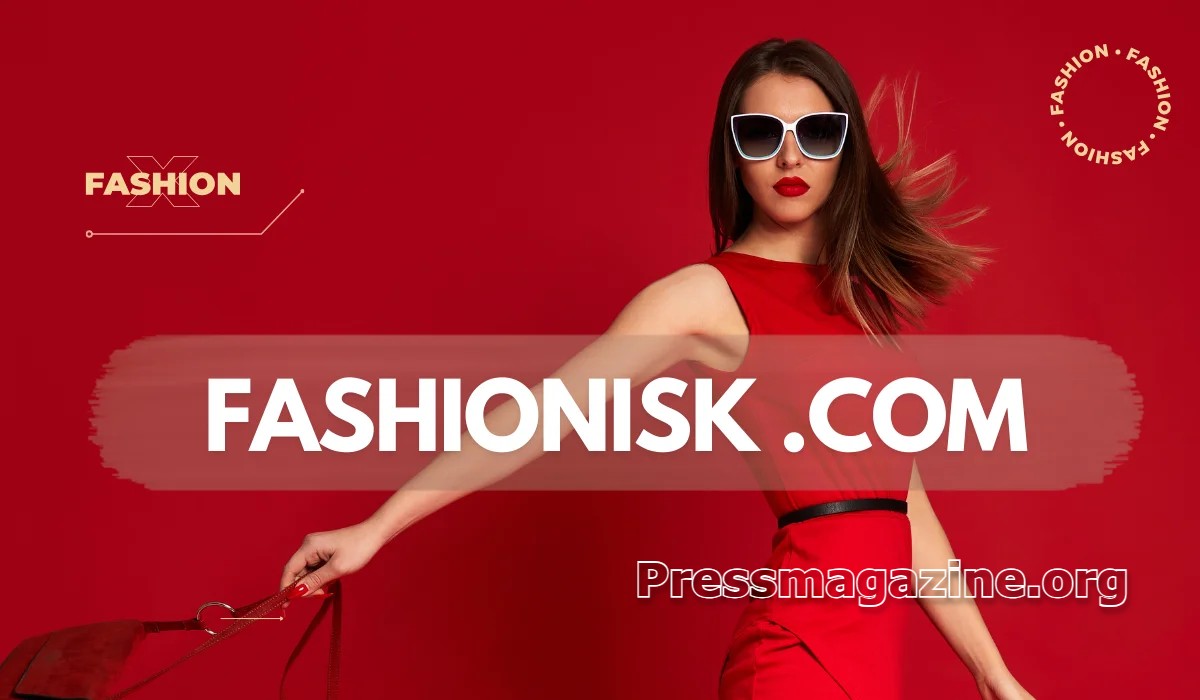Imagine walking through a bustling market, with vibrant colors all around, where each outfit tells a story. That’s the essence of fashion. But how do you capture that essence in a blog post? Let’s dive into how to create an engaging, SEO-savvy blog about fashion that resonates with readers on Fashionisk .com.
Understanding Your Audience: Who Reads Fashion Blogs?
Knowing who reads fashion blogs is fundamental for creating content that resonates with your audience. You need to understand your target demographic, which involves looking at their age, interests, and fashion sensibility.
Identify Your Target Demographic
Start by analyzing the age groups that engage with your blog. Statistics reveal that 45% of fashion blog readers are aged 18-34. This age range is particularly important because they’re often trendsetters. Think about it: these readers are likely looking for the latest styles or unique fashion tips. Are you catering to their interests?
- Consider their interests: Do they prefer vintage fashion, streetwear, or high-end designs?
- What is their fashion sensibility? Are they experimental and daring, or do they lean toward classic looks?
Conduct Surveys or Gather Feedback
One way to gain insights into your readers’ preferences is through surveys. Simple questionnaires can provide essential feedback on what your audience wants to see. What types of content do they engage with the most? Create opportunities for your readers to voice their opinions.
Use Social Media Interactions
Don’t underestimate the power of social media. Here, you can interact directly with your audience and learn about their desires. Share polls, ask questions, or simply read the comments. Sometimes the best ideas come from conversations with your followers. It’s all about tailoring your content to meet their needs.
Utilize Analytics Tools
Engaging with your audience isn’t just about interaction; it’s also about understanding behavior through analytics tools. These tools can reveal what works and what doesn’t. Are certain blog posts getting more traffic? Which social media platform drives the most engagement? Knowledge is power!
Engaging with your audience is also crucial. Respond to comments on your blog and social media platforms. It helps build a community around your content.
Content Preferences
Another interesting stat: 60% of fashion blog readers prefer visual content over text. Think about your posts: Are you incorporating enough images, infographics, or videos? If you want your blog to thrive, you might want to focus on more visual elements.
“Knowing your audience is the key to creating compelling content.” – Jane Doe, Fashion Analyst.
Ultimately, understanding your audience’s preferences is essential in fashion blogging. It will enable you to create content that not only captivates but also engages them. Your blog can become a trusted resource by knowing who reads it.
Crafting the Perfect Title: The Gateway to Engagement

When it comes to blogging, the title can determine your post’s success. Think about it: your title is the first thing a potential reader sees. It can tug at their curiosity or leave them utterly disinterested. You need to capture attention quickly. But how? Let’s explore some strategies for crafting the perfect title.
1. Use Relevant Keywords
First off, always incorporate attractive and relevant keywords in your title. This approach not only helps readers understand what your post is about at a glance but also boosts your SEO game. Keywords make it easier for search engines to find you. Have you ever thought about how search engines work? They thrive on keywords! So, make sure to sprinkle them like confetti throughout your title.
2. Create Intrigue
Next, consider using intrigue to draw readers in. A title should act like a magnet! It should pull readers towards your post, provoking questions like “What happens next?” or “Why should I care?”. For instance, instead of saying “Tips for Success,” try “Unlock the Secrets to Achieving Success.” See the difference? The second title is much more inviting.
3. Test Multiple Options
How do you know what works best? Test multiple title options for SEO effectiveness. A/B testing is a fantastic way to determine which titles draw the most clicks. Try different variations. Monitor how each title performs over a set period. Then, you can choose the winner!
Keep it Concise
Remember, keep your title concise yet descriptive. A long, convoluted title can confuse your reader. Instead, aim for clarity. A straightforward title is key.
Did You Know?
Here’s something to ponder: 70% of readers only skim titles before deciding whether to read further. That’s significant! If your title lacks pizazz, chances are it will be overlooked. Your title should capture the essence of your post and entice readers to click.
“A great title can make or break a blog post’s reach.” – John Smith, Content Strategist.
| Statistic | Percentage |
| Readers who skim titles | 70% |
In summary, your title is your first impression. Make it count. Craft it carefully, and watch your engagement levels soar!
SEO Essentials: Optimizing Your Fashion Blog

As a fashionisk blogger, you want to stand out, right? One of the best ways to do this is through effective SEO practices. Let’s dive into how you can optimize your blog to ensure both visibility and engagement.
1. Research Primary and Secondary Keywords Effectively
Keyword research lays the foundation for your blog’s SEO strategy. It starts with finding the right keywords that resonate with your audience.
- Use tools like Google Analytics and SEMrush to uncover trending keywords.
- Focus on both primary keywords, which are the main topics, and secondary keywords, which are related terms.
- Don’t just pick the most popular keywords; think about what your audience is truly searching for.
Think of it as being a detective. You are searching for the clues that lead your audience to you.
2. Maintain Desired Keyword Density
Once you’ve chosen your keywords, it’s vital to sprinkle them throughout your content. However, there’s a fine line between optimizing and keyword stuffing.
Ideally, you should aim for a 1-2% keyword density. This means that if your blog post has 1000 words, your primary keyword should appear around
10-20 times. You want to keep your content readable and engaging. Overuse of keywords can make the text sound robotic or forced.
If you focus on providing value to your reader, you will naturally incorporate keywords without disrupting the flow.
3. Implement SEO Best Practices for On-Page Optimization
On-page optimization involves refining various elements on your blog.
- Title Tag: Include your primary keyword here.
- Meta Descriptions: Briefly describe the content while focusing on your keywords.
- Headings: Use headings and subheadings to break up text and enhance readability.
Remember, SEO is not just about ranking; it’s about providing value to your audience. This quote from
“SEO is not just about ranking; it’s about providing value to your audience.” – Sarah Jones, SEO Expert.
That perfectly sums it up. Your blog should answer your readers’ questions and keep them coming back for more!
In the end, SEO should feel natural in your writing, enhancing readability while helping you achieve your blogging goals. You have the tools and techniques it’s time to put them into action!
Telling Stories: Real-life Examples and Anecdotes

Engaging your audience in fashion isn’t just about showcasing the latest trends. It’s also about telling compelling stories that resonate. Believe it or not, a well-told story can increase reader engagement by up to 300%. So, how do you craft these stories?
1. Integrate Personal Stories
Have you ever had that moment when you picked an outfit and felt on top of the world? Maybe it was a simple black dress that made you feel confident at a friend’s wedding. Perhaps it was the first time you wore a vibrant jacket that immediately brightened your mood. These personal anecdotes matter.
By sharing your experiences, you connect with your readers in profound ways. They can see themselves in your story. This is crucial! Like Alice Green said,
“People connect with stories on a personal level, making content more memorable.”
So, don’t shy away from sharing those vulnerable moments.
2. Utilize Case Studies of Notable Fashion Figures
Let’s take a cue from fashion icons. Consider Coco Chanel. She transformed the world of women’s fashion. Her journey from a modest upbringing to founding a luxury brand inspires many. By sharing her story, you not only highlight her achievements but also inspire your audience.
Such case studies allow readers to engage emotionally. They can dream big because they see the path others have taken. Each story serves as a reminder that fashion is deeply intertwined with our narratives.
3. Share Relatable Moments That Evoke Emotion
Picture this: a young designer struggling to find their niche in a crowded market. They face rejection but keep pushing forward. Eventually, they landed a collaboration with a well-known brand. Moments like this filled with determination and triumph evoke feelings of hope and inspiration.
Remember, stories are not just tales; they create connections. When you bring your audience along for the journey, you cultivate a deeper relationship with them. They feel seen, heard, and understood.
Consider the Storytelling Format
When presenting examples, think about how your audience will want to consume them. Short paragraphs keep the flow lively. Maybe use some bullet points for clarity:
- Integrate personal stories that resonate.
- Utilize case studies of notable fashionisk .com figures.
- Share relatable moments that evoke emotion.
In essence, weaving narratives into your content fosters connection. And it’s a known fact that narratives significantly increase engagement. What story will you share next?
You have the power to transform simple content into an engaging experience. So, get started today! Use the stories and anecdotes that shape the world around you.
Balancing Authenticity and Optimization

In the world of blogging, there’s a constant tug-of-war between being authentic and optimizing for search engines. It’s crucial to stay true to your voice while also considering SEO strategies. But how do you accomplish that balance?
1. Stay True to Your Voice
Your voice is what makes your blog unique. If you dilute it to fit an optimization strategy, you may lose your readers. Think about it: when was the last time you enjoyed reading something that felt forced or robotic?
Keep your writing genuine. Share your personal experiences and thoughts. This approach not only engages your audience but also builds trust. Remember, authenticity is the bedrock of successful blogging; it’s what sets you apart, just as Mark Lee, a Digital Marketing Specialist, pointed out.
2. Avoid Sacrificing Authenticity for Rankings
Many bloggers fall into the trap of over-optimizing their content. They stuff keywords in unnatural places. This tactic can sometimes yield short-term results in rankings, but it can cost you your loyal readers in the long run. After all, an article that’s hard to read isn’t worth ranking high, right?
Instead, opt for a balanced approach. Use keywords naturally within your content. This way, you’ll attract readers searching for authentic stories and insights. Genuine articles resonate more, leading to higher retention rates among readers.
3. Encourage Reader Interaction and Feedback
Engagement is a two-way street. Encouraging reader interaction and feedback can enhance both authenticity and SEO. Ask questions, invite comments, and respond to your readers. It creates a community around your blog and shows that you value their input.
- Start conversations.
- Utilize polls or surveys.
- Encourage readers to share their stories.
When your audience feels heard, they’re more likely to return and share your content.
Why Authenticity Matters
In today’s fast-paced online landscape, readers appreciate genuine content that reflects personal truths. They crave connection. And when you present authentic ideas, you foster loyalty.
Ultimately, creating a balance between authenticity and optimization may seem challenging, but the rewards are incredible. Your readers will appreciate your honesty and be more likely to engage with your content over time.
Formatting for Readability: Keep Them Engaged

When you write content, formatting is just as important as your words. Did you know that good formatting can make the difference between a reader staying or leaving your page? According to Emily Clark, a graphic designer,
“The way you format your content can either invite or deter readers.”
So, let’s explore how you can enhance your articles.
1. Use Headers, Subheaders, and Bullet Points Effectively
Headers and subheaders guide your readers. They break up your text and let you organize your thoughts. Imagine you’re navigating a map. Wouldn’t it be stressful if there were no signs?
- Headers: Clearly label each section to give an overview.
- Subheaders: These dive deeper into subtopics.
- Bullet Points: Use them for lists or essential takeaways.
This structure helps readers find the information they want quickly. It fosters engagement. Plus, research shows that articles under 1,000 words have higher engagement. Keep your content concise and focused!
2. Incorporate Visuals to Break Up Text
Visuals are more than just eye candy. They enhance comprehension and retention. According to recent data, 95% of readers prefer articles with visuals. Think of the last article you read. Didn’t an image or graph make a complex idea clearer?
Use diagrams, charts, or images to support your arguments. An illustration can say what words can’t. Aim for balance though; don’t overload your post. A few carefully chosen visuals can work wonders!
3. Utilize Short Paragraphs for Enhanced Readability
Lastly, consider the length of your paragraphs. Keep them short. A single-sentence paragraph can pack a punch, highlighting a critical point.
Remember, long blocks of text can be overwhelming. They make readers feel drained before they even begin. Instead, aim for a mix of paragraph lengths. A blend keeps your content fresh and inviting.
It’s important to format your blog posts comprehensively. Ensure they are readable and engaging for all types of readers. After all, you want people to enjoy the journey through your content!
Final Touches: Reviewing and Publishing Your Post

As you approach the finish line of your blog post, it’s crucial to ensure everything is in order before hitting that publish button. You might be asking yourself, “What should I check?” Here’s a simple but effective strategy:
1. Create an SEO Checklist
Before you publish, make a comprehensive checklist for SEO elements. This is key for improving visibility. Include items like:
- Key keyword usage in headings and body.
- Optimized title and meta description.
- Alt text for images.
- Linking to credible sources and internal links.
Each of these factors contributes to how well your post can rank on search engines. Think of it like a car: if every part works, you get smooth driving. But if even one part is missing, you might find yourself stalled.
2. Proofread, Proofread, Proofread
Next, you should proofread your content. This is essential! Look for grammatical errors and inconsistencies. Remember, typos can harm your credibility.
Do you want your readers distracted by misspellings? Probably not! Read it yourself, and consider using tools like Grammarly for a second opinion. It’s like having a helpful friend point out mistakes you might miss.
3. Schedule for Engagement
Finally, think about timing. Schedule your posts when your audience is most likely to engage. Did you know that content published on Tuesdays tends to receive higher engagement? That’s not just a random fact it’s based on data! Consider the habits of your readers and plan your posts accordingly.
Regularly reviewing your content can significantly enhance your blog’s quality. Just like your blog’s lifecycle, it evolves. Consider seasonal trends as you plan future releases. After all, a post about summer fashion is best released as the weather warms up.
“A thorough review process is essential for an impactful blog post.” – Rachel Adams, Editor.
In conclusion, finalizing your post is more than just a last glance. It’s about ensuring every detail shines. From SEO checklists to timing your posts just right, these touches make your content more appealing and effective. Always double-check for accuracy before hitting publish, and remember that these little efforts can make a significant impact on your blog’s reach and engagement. So, go ahead, polish that post, and share it with the world! Your readers are waiting.

